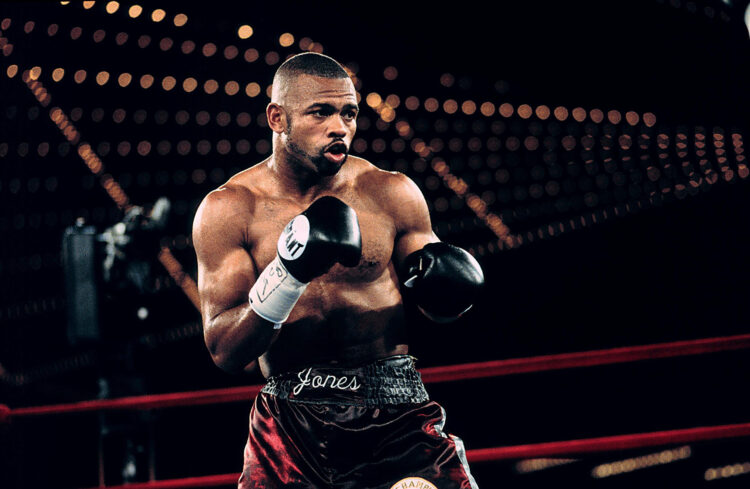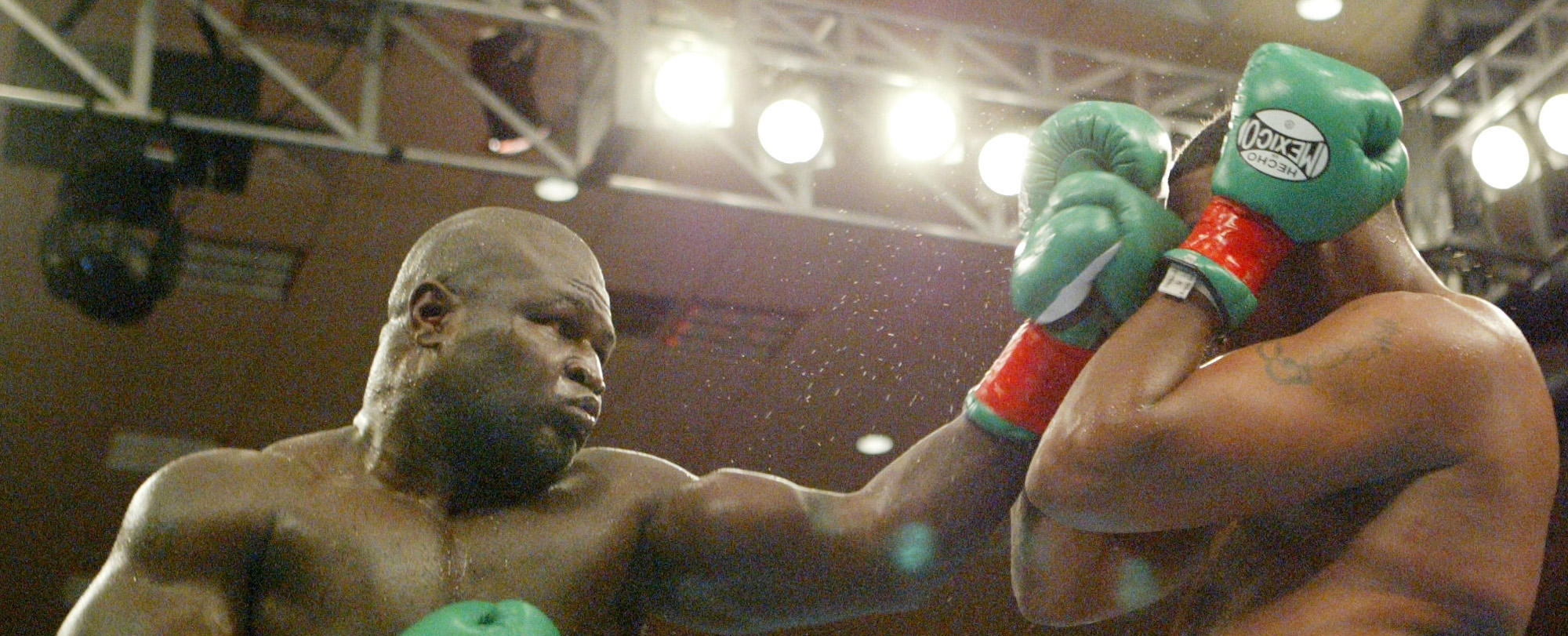In June, after a two-year absence, the Parade of Champions will be resurrected, and the International Boxing Hall of Fame will reunite the sport’s Salieri and Amadeus on Peterboro Street.

In June, after a two-year absence, the Parade of Champions will be resurrected, and the International Boxing Hall of Fame will reunite the sport’s Salieri and Amadeus on Peterboro Street. Gods of war willing, the class of 2022 will descend on Canastota, N.Y., for a four-day induction ceremony, flanked in their ranks by the backlog of inductees whose public enshrinements were deferred in 2020 and 2021. This year’s class features James “Lights Out” Toney and Roy Jones Jr., who met as The Ring Magazine’s number three and number eight pound-for-pound boxers in the world (respectively) on Nov. 18, 1994. I was 6 years old — and already a practitioner of the sport — when they faced off for Toney’s International Boxing Federation (IBF) super middleweight championship. The fight — sold to the viewing public as “The Uncivil War” — served as the main event of an HBO pay-per-view card. The champion was 26 years old; the challenger was 25. Both men entered the ring undefeated as professionals. Their meeting promised to decide the finest boxer of the decade, at least. And at a large family gathering in my uncle’s house, the television glowed in the living room.
Toney emerged on the floor of the MGM Grand Garden Arena dressed from head to toe in black. My father, of course, had spray-painted my headgear and chest protector the same shade. Toney had waited for his music to begin before stepping into view of the spectators, and after he climbed through the ropes and removed his cap, his skull shined under the arena lights like a bullet. He was an acolyte of the trainer Bill Miller, a former fighter steeled in the furnaces of Detroit’s storied Kronk Gym. Together, they practiced the techniques of Jersey Joe Walcott and Ezzard Charles — Miller’s friends and contemporaries — and before long, the student proved himself a defensive savant with power in either hand. His record stood at 44 wins with no losses. And his reputation as an angry man — a narrative that HBO had fostered across several broadcasts — preceded him. Maybe that, even more than his wardrobe, was why I loved him. On a previous televised boxing card, in cooperation with Toney, HBO had produced a segment that discussed some of the circumstances surrounding the abandonment that he had suffered as a child. Toney had been left by his father; and as an adult, he was unwilling to allow the man back into his life. As Toney prowled the ring ahead of the ceremonial introductions, HBO’s resident boxing analyst, Larry Merchant, described him as more than angry, reasoning that labeling him as simply angry was tantamount to calling Hollywood’s Michelle Pfeifer a mere “girl” or a hurricane the “wind.”
Jones, the decorated challenger, came out wearing white like a predestined hero. As a teenager, at the 1988 Olympic Games in Seoul, he had been awarded a silver medal in the 156-pound weight class after battering Park Si-Hun in the final. Jones lost the decision by a dubious 2–3 vote, and the International Olympic Committee’s investigation of perhaps the most egregious robbery in Olympic history would drag itself into 1997. Jones would hold onto his second-place bauble and turn professional as an empathetic talent on a mission to claim some greater material trace of world-scale validation.

But in 1994, plenty of pundits still questioned his professional résumé. Several of his victories appeared to have been collected rather than earned, and stylistically, Jones had already begun relying on his speed and reflexes so much that he often eschewed a textbook left jab from his offensive assaults. He would say that he preferred to lead with his left hook — a sometimes dangerous method of attack for less talented boxers — because it aided his lateral movement. Some fans, to be sure, had already crowned him the next Ray Leonard; but many aficionados were still waiting to study a larger sample size. Jones also went without an in-ring sobriquet — save, perhaps, for “Junior.” Like many boxers, his pugilistic development had been shepherded in his childhood by his father, abuse — Jones Jr. later realized — that was often disguised as training. Roy Jones Sr. had stood and screamed from the stands after the bogus decision was announced in Seoul. But before his first professional title opportunity as a middleweight, Jones Jr. severed ties with his namesake and won a measure of glory on his own. And a full year before his super middleweight title shot, Jr. told HBO’s broadcast team that he didn’t want to be the second coming of Ray Leonard: He wanted to be the first Roy Jones. At the time, the boxing media had no way of knowing that he had already defeated a professional — Bernard “The Executioner” Hopkins — who would precede him and Toney into the Hall of Fame.
By the time the bell rang to signal the start of “The Uncivil War,” though, I had already left the living room to chase my cousins elsewhere, to play. And I lost track of time. I didn’t return to face the glow emanating from the screen until the fight was over. Standing on the carpet in the living room, I was confronted by a replay from the third round — a turning point in a bout that had already been trending toward the challenger — and I read their bodies, washed in the ebbing light, as they probed and feinted.
“Showboating by Jones,” said HBO’s Jim Lampley. In the replay, Jones was posing in front of Toney. In a sport where the ideal is to hit and not be hit, the tableau was extraordinary. During a contest, boxers will communicate with each other through coded actions. I understood this even as a boy. An appeal to the referee is an admission that you are having trouble helping yourself. An outstretched glove after the bell to end a round is always desperate for reciprocation, for a handshake agreement to punch a little softer. Jones and Toney were not performing these specific actions in the center of the ring, but they had certainly paused to exchange information. Lampley’s comment came as Jones dropped his gloves and extended his arms at his sides, squatting as he did, daring the defending champion to come toward him. It was what Jones, a young man from a pig farm near Pensacola, would refer to in later years as “chicken fighting.” Throughout his career, in creative bursts of violence, he would adapt the movements of the roosters he raised into artful feints, at times wounding and embarrassing his opponents when they froze and he fired. Precariously, Toney responded to Jones by mimicking the movement, allowing his hands to fall to his side. “You tempt fate, I think,” said Lampley, and then Jones soared out of his pose, drawing an arabesque with his lead left hook, and interrupting the commentary with the unmistakable smack of impacted leather. Toney stumbled backward as the spectators rose to roar. And Jones gave chase, and Toney backpedaled half the length of the ring — squatting as he did — until he crashed into the bottom turnbuckle in his own corner. My heart sank at the sight, but I could not doubt the evidence of my eyes. And as the referee stepped forward to intervene and count the knockdown, Amadeus stood over Salieri, fist alight.
Jones went on to win a lopsided decision. Toney could not touch him. Late in the fight, the result a foregone conclusion, Lampley called the performance Jones’ redemption for the Olympics.
And, indeed, Jones became the Fighter of the Decade, his dominance spilling into the 21st century. In 2003, he added plates of muscle to his 5’11” frame to facilitate a move to the heavyweight division, and in his first fight there, he challenged John Ruiz — who had come out ahead of an aged Evander Holyfield after a trilogy of contests — for the World Boxing Association’s third of the World Heavyweight Championship. Against a man who outweighed him by more than 30 pounds, Jones game-planned accordingly and rode an exquisite left jab to victory. He became the first former middleweight champion to capture a major heavyweight title in more than 100 years. And he managed to maintain his uncanny quickness — and, thus, his invincibility — for one more year after reaching that summit.
Toney, who became a light heavyweight contender after losing his super middleweight title, struggled for years — with his weight, with his anger — before righting his career as a cruiserweight in the early aughts. In 2003, he won the Fight of the Year and another IBF championship as a goateed, musclebound veteran. Later that year, after moving up to heavyweight, he surprised many pundits by thoroughly outclassing Holyfield and knocking him out. And in 2005, as a fully blossomed heavyweight, he earned a title opportunity against John Ruiz, who had reclaimed the WBA championship after Jones relinquished it, in Madison Square Garden. Toney won the fight and the title with an apparent ease that rivaled the performance his nemesis had delivered against the same opponent — he even one-upped Jones by dropping Ruiz in the seventh round — only to have the belt stripped from his waist by the New York State Athletic Commission after testing positive for an anabolic steroid. The contest is listed as a “No Decision” on his official record.
Jones is entering the Hall of Fame as a first-ballot selection.
Toney’s selection comes in his second year of eligibility.
I had never watched the fight in its entirety until this year, until after the results of the Hall of Fame ballots were announced, and both men were confirmed immortal. A large part of me still roots for Toney. He has never stopped asking for the rematch. Today, he still floats the idea of another fight against Jones on a social media account that he controls. He understands how wide the scorecards were in 1994. Regardless, the defeat remains unfathomable in his mind. He was a virtuoso himself. He will tell you that he still is. Toney may warm to the notion of fighting Jones on Peterboro Street, if properly instigated. But only Jones was peerless in his prime. And as much as I remember the iconic knockdown, I also remember that the most memorable blow Toney ever landed on Jones came from his mouth. Near the end of a live satellite interview to promote the date in Las Vegas, with the fighters arguing back and forth from remote locations, Toney raised his voice and cut through the dissonance with such rhythm and clarity — and distilled anger — that he almost sang his words. “I’ll knock your punk ass out,” he said, and maybe he meant one day, in the far-flung future, in Canastota.
— Alexander Ramirez is from Sacramento, Calif. He is the 2021–2022 Olive B. O’Connor Fellow in Creative Writing (Nonfiction) at Colgate University. He holds a PhD in English from the University of Nebraska-Lincoln, and his writing has appeared in The Missouri Review, Image Journal, and The Journal of American Culture, among other publications.

